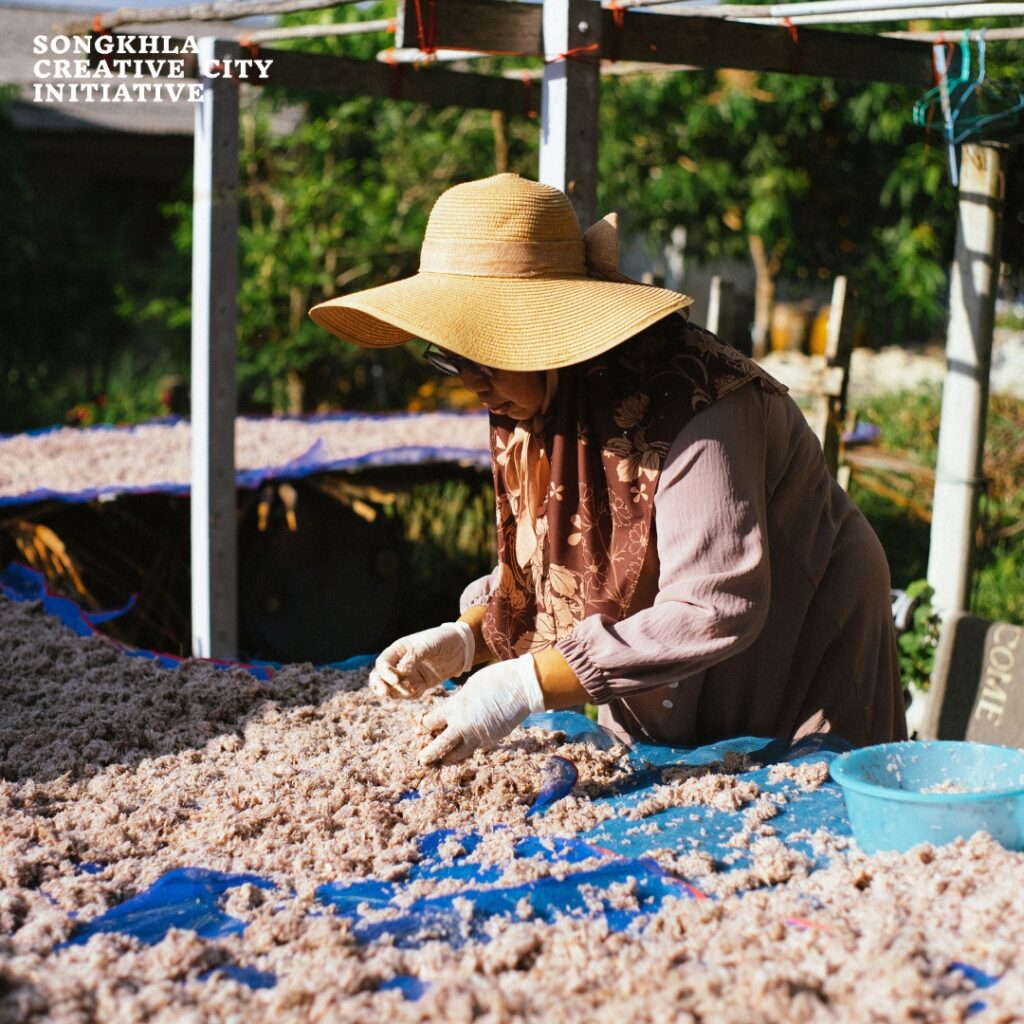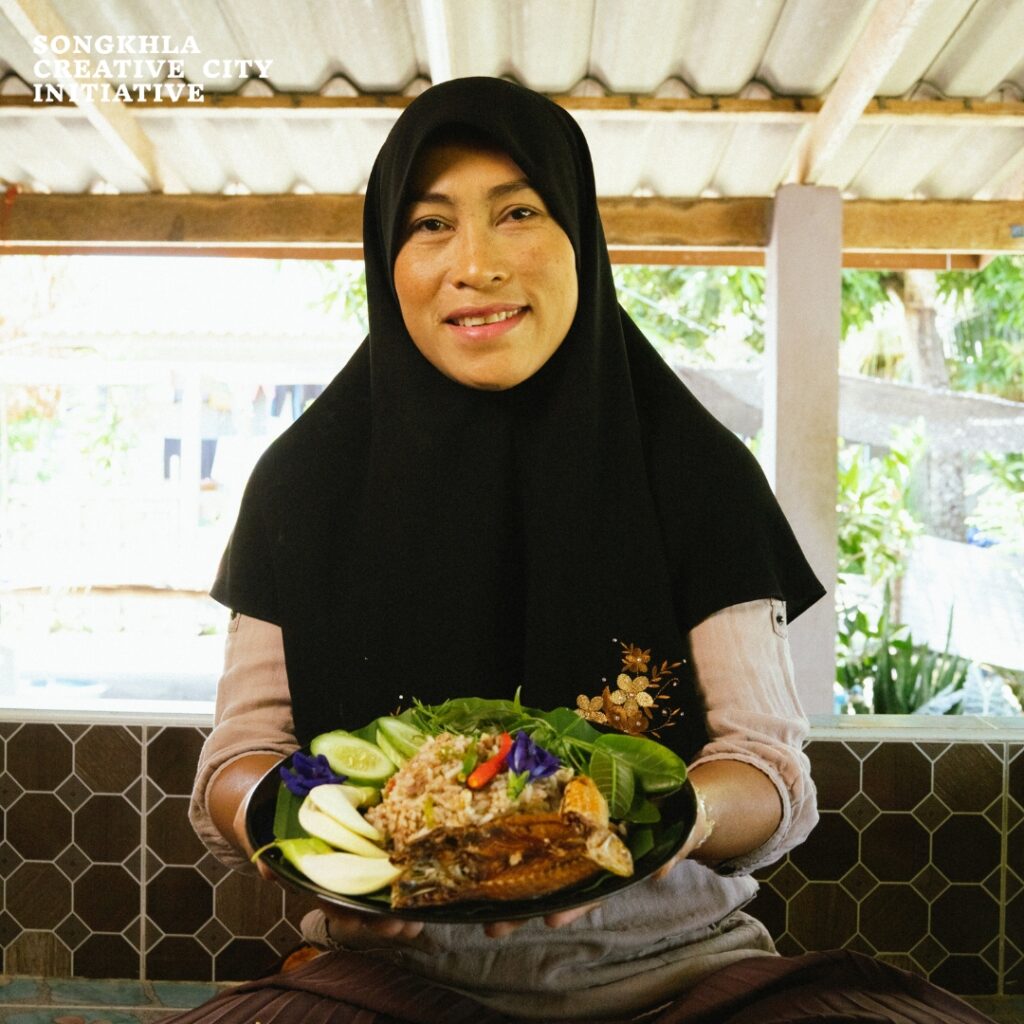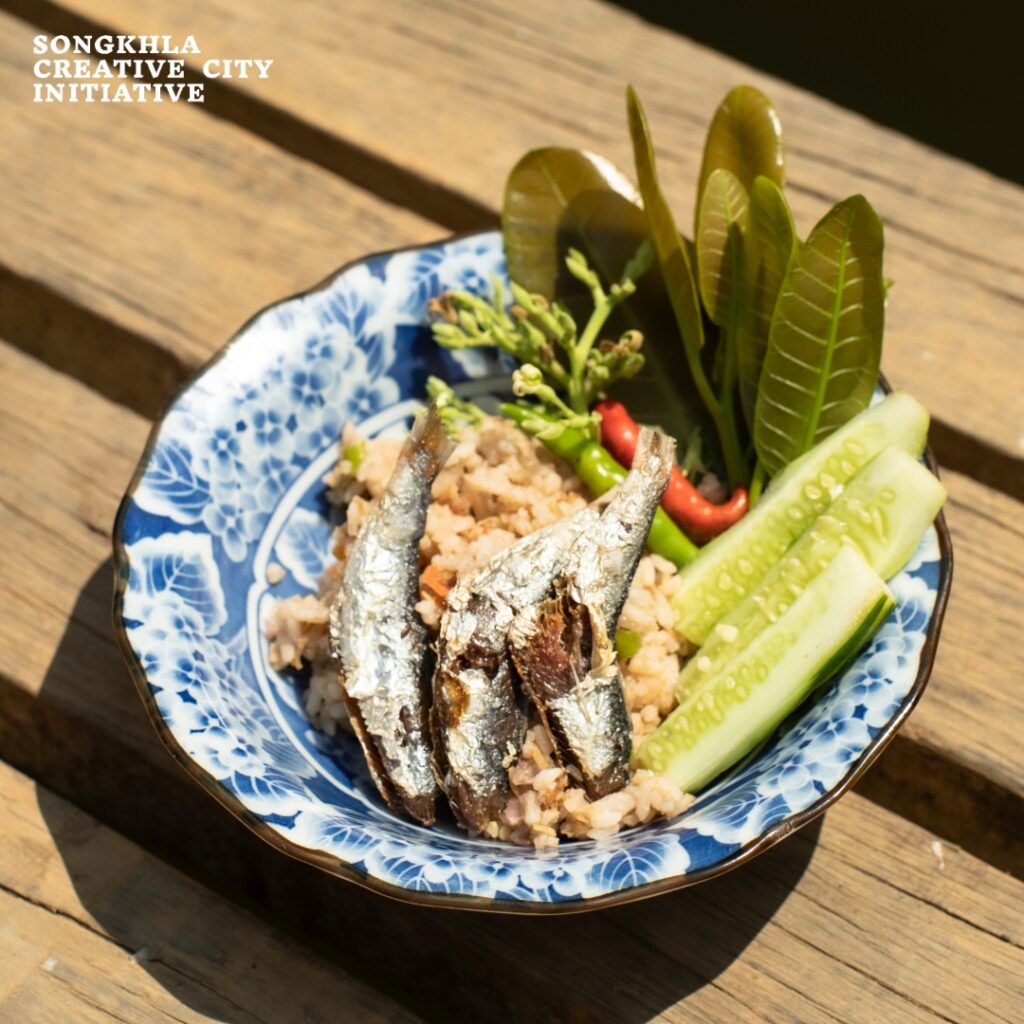“Shrimp paste consists of only a handful of essential ingredients: shrimp, salt, and sunlight. But when made with love and care, our shrimp paste is most delicious. I am so proud of ‘our shrimp paste’”, cheerfully says Ms. Subai-do Phakaphet, or Nilom, the ‘shrimp paste maker’ of the Pak Bang community in Sakom sub-district, as she describes the story of her involvement in making shrimp paste since childhood.

Between January and February each year in the lower Gulf of Thailand, tiny pink marine creatures known as “krill”, with thin clear shells, come ashore in large herds, and are a fundamental raw ingredient for the production of “shrimp paste”. They come ashore for no more than 7-10 days annually, making this period extremely valuable to the people of Sakom for increasing the production of shrimp paste, using two main processes: fresh dried krill or fermented krill.
“Since the old days when we had to “cha-re-khoey”, or grind with a large mortar and pestle, it has changed to using automatic machines for grinding krill. Original recipes didn’t exactly weigh or measure the amount of salt used, so shrimp paste in the past was much saltier. Presently, the recipe has been improved until we arrived at a stable ratio of 100 kilograms of krill to 15 kg of granulated salt, giving a distinctive flavor unique to the Sakom people.”

“People in this country have no need to stockpile rice because they can buy it anywhere. But we have to stockpile shrimp paste so that we never run out. Each household always has to have at least 5 kilograms”, says Nilom.
‘Khao Dok Rai’ – a staple shrimp paste dish in the kitchens of Sakom people
Khun Santhaya Jehni, or Ni-son, a resident of the Pak Bang community, Sakom sub-district, demonstrates how to “tem” Kaho Dok Rai and provides information about local cuisine and menu items of the Sakom people which have been consumed in every local household from past to present. Ingredients are sourced from within the community and, most importantly, only “our local fermented fish” is used, which is pounded in a special Khao Dok Rai mortar made from teak wood, featuring a hole in the center, designed to act as both a chopping board and mortar simultaneously.

The process begins by thinly-slicing lemongrass and pounding until fine. Then add fresh chili, shallots, tamarind pulp, shrimp paste, and cooked fish (any seasonal fish with a lot of meat may be used, including Indian mackerel, bigeye sardines, or jongmong fish). Finally, add cooked rice and slowly “charaw” (mix) until well combined. Serve with a variety of vegetables and fresh-fried or dried fish.
Khao Dok Rai is a local specialty of Sakom, with the spicy flavor and fragrant aroma of shrimp paste. Surrounded with the cheerful conversation of friends and relatives, “eating Khao Ramai” helps to maintain strong relationships between people in the community, together with their ways of life, the water, and sea.
